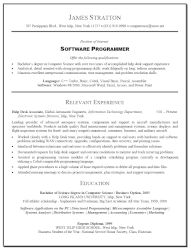Résumé Writing for EFL Learners/Course Syllabus
Contents
Session 1
Course Objectives
The overall objective of this course is to teach you how to prepare an American style résumé.
During this learning pathway you will:
- Learn the differences between a résumé and a CV
- Learn how to tailor your résumé to your employer's needs
- Learn how to distinguish between a well-written résumé and a poorly-written one
Introduction
Did you know that: “labor Department officials estimate that approximately 40% of the workforce change jobs every year “(De Alva, 2000 as cited in Howell, Williams & Lindsay, 2003, p. 28).[1] Therefore, if you’re one of these people, knowing how to write an American style résumé will come in handy. A well-written résumé can land you not only a good job interview but also a top position in a first-rate American company.
In this course you will learn the differences between a résumé and a CV. In addition, you will be provided with an example of the standard résumé format and a sample résumé. You will be required to analyze sample résumés and determine which essential components are missing. Finally, you will have the opportunity to review important grammar, vocabulary and preposition usage to help you create your résumé.
Course pre-requisites: Possess intermediate or advanced level English proficiency.
Why should I learn how to write a résumé?
Some facts:
- In the US, a CV is used mainly when applying for academic, education, scientific, research positions or fellowships and grants.
- On a American résumé personal information such as date of birth, nationality, and place of birth is usually not included.
- A CV is usually longer (up to two or more pages and contains a more detailed synopsis of your background and skills.
- Fact: many Brazilian companies are currently favoringg the résumé over the CV. Why? Because it's quicker to read, more objective, and easier to use as a benchmark to eliminate job candidates that don't fit the the position.
- ↑ Howell, S., Williams,P.B., & Lindsay, N.K. (2003). Thirty-two trends affecting distance education: An informed foundation for strategic planning. Online Journal of Distance Learning Administration, 6 (3). State University of West Georgia.
Course Activities
Here are the activities for this learning pathway:
- Reading sample résumés and determining which essential information is missing from them
- Classifying résumés as being chronological or functional
- Writing a résumé critique
- Reviewing some basic grammar points such as: subject-verb agreement, phrasal verbs and word forms
- Creating a blog to register your tasks in this course and to upload your résumé critique and subsequent résumé drafts
- Providing feedback to other students' résumé critiques
Reading Activity
First study the Résumé Format. Then, see an example of a sample résumé. Finally, do the assignments
- This is just one example of a sample résumé. There are many more that you can find by searching the Internet.
Taks
Task 1
- You will be presented with 4 sample résumés. Carefully read each one and determine which essential section is missing from them. Correct answers can consist of, for example, only one word such as: Education or of short answers: achievements of job x. Post and share your answers on the blog you have created for this course. Don't forget to include in your blog the following hashtag: #RWFEFL
File:Sample Résumés- Task 1.pdf
Knowing how to tailor your résumé to your employer’s needs
We have studied the key attributes of résumés in general. Other equally important attributes are:
- APPEARANCE: Your resume should be well-organized with consistent headings, fonts, bullets, and style. Never overcrowd the resume. Leave some "white space" so that important points can stand out; and try to make your margins between .75” and 1” on all sides. For print resumes, use subdued color paper, such as white, ivory, beige, light gray.
- AVOIDANCE OF TYPOS/MISSPELLINGS. Take the time to carefully write, rewrite, and edit your resume. Be sure to meticulously proofread your resume for misspellings and typos. You wouldn’t want your résumé to get thrown in the trash can, would you?
One of the first decisions job-seekers must make when preparing their résumés is how to organize the résumé's content. Résumés are usually organized using the following formats:
- Chronological (actually reverse chronological, listing all your experience from most to least recent).
- Functional, which lists experience in skills clusters.
- A combination or hybrid of those two types, also known as a chrono-functional format.
Chronological Résumés
The traditional format for résumés is the chronological résumé. This type of résumé is organized by your employment history in reverse chronological order, with job titles/names of employers/locations of employers/dates of employment/ accomplishments, working backwards 10-15 years. A standard chronological résumé may be your best choice if most/all of your experience has been in one field, you have no large employment gaps, and you plan to stay in that same field. The chronological résumé is preferred by the widest variety of employers, as well as by recruiters and many of the Internet job boards. Recruiters and hiring managers tend to like this résumé format because it's easy to read and clearly demonstrates your job history and career advancement/growth. This format is also recommended for all conservative career fields (such as accounting, banking, law, etc.) and international job-seeking.
Functional Résumé
The résumé format preferred by job-seekers with a limited job history, a not so good job history, or a job history in a different career field, is the functional resume. Job-seekers who take a functional approach organize their résumés by skills and functions clusters. In a purely functional résumé, company names, employment dates, and position titles are intentionally omitted. The functional résumé can work for homemakers returning to the workforce, for example, or for new graduates entering the job market.
This résumé format is the least common and least preferred by employers -- and most Internet job boards do not accept this résumé format.
Combination Résumés (Chrono-Functional)
Because the purely functional format has been much criticized in recent years, some job-seekers have learned to structure their résumés in a mostly functional format but to also include a work history in reverse chronological order, creating what is known as a chrono-functional, hybrid, or combination format.
The work-history section need include only job title, name and location of employer, and dates of employment. You don't need to list what you did in each job because that information already is listed in your functional sections. The chrono-functional/hybrid/combination résumé highlights outstanding skills and achievements that might otherwise be buried within the job-history section while simultaneously presenting, yet deemphasizing, the chronology of jobs. The focus is on clusters of transferable skills and the experiences that are most relevant to the position for which you are applying. If you are open to more than one type of job, you can reconfigure the functional skills clusters to emphasize the skills most relevant to the particular job you seek.
Chrono-functional/hybrid/combination résumés suit a variety of job-seeker needs, such as a diverse job history that doesn't add up to a well-defined career path and situations where the job-seeker has work experience that is related but not an exact link to desired position. Job-seekers who have large employment gaps or many short employment jobs prefer this format because it downplays employment history. This type of résumé also works well for older workers, career changers, and job-seekers with academic deficiencies or limited experience.
Online Résumés
With the advent of the Internet and existing employment data banks such as Linkedin,the search for employment has become more electronic, Some employers accept résumés electronically, either out of practicality or preference. This has changed much about the way résumés are written, read, and processed. Some career experts are pointing out that today a paper-based resume is an exception rather than the rule.[1]
For inspiration on creating your own electronic résumé, watch the Animated Résumé video created by Vee Motingoa, licensed under CC BY-SA 3.0.
- ↑ Garone, Liz (23 June 2014). "To Print Or Not To Print". http://www.bbc.com/capital/story/20140620-to-print-or-not-to-print. Retrieved Jun 25, 2014.
Task 2
- You will be presented four more sample résumés. Your task is to classify them into the following categories: chronological or functional format. Post and share your answers on the blog you have created for this course. Don't forget to include in your blog the following hashtag: #RWFEFL
File:Sample Résumés- Task 2.pdf
Discussion
State 3 things you learned about résumé writing during this learning pathway that you think will be helpful in writing your own résumé on your blog. Don't forget to include in your blog the following hashtag: #RWFEFL. Comment on at least two other of your classmate’s posts.
Task 3
To complete Task 3, you should select one of the résumés you classified in Task 2, as being chronological or functional, and write one paragraph critiquing it. Write your 250 word critique answering the following questions:
- Does the résumé contain the appropriate contact information?
- Is the résumé’s objective clear?
- Are the applicant’s qualifications clearly defined and well-stated?
- Are lists (qualifications, responsibilities and achievements) bulleted correctly?
Post your critique on your #RWFEFL blog and comment on at least two other of your classmate's critiques.
Take this short quiz to assess your knowledge on résumés.
- Essential résumé components are:
- contact information, objective, career highlights, experience, education, skills and references
- contact information, objective, experience, education, skills and references
- contact information, experience, education and skills
- Correct! Essential résumé components are:contact information, experience, education and skills
- Lists of responsibilities and achievements should always be:
- highlighted
- underlined
- bulleted
- Correct! Lists of responsibilities and achievements should always be bulleted.
- Functional résumés are appropriate for job-seekers who:
- are looking for employment abroad
- have large employment gaps
- have a limited job history
- Correct! Functional résumés are appropriate for job-seekers who have a limited job history.
- Chrono-functional résumés suit:
- older workers, career changers and job-seekers with limited experience
- new graduates entering the job market
- job-seekers in conservative career fields
- Correct!Chrono-functional résumés suit older workers, career changers and job-seekers with limited experience.
- The résumé should always be:
- laid out in MS Word on A4 paper
- laid out in MS Word on A3 paper
- laid out in MS Word on 8.5 X 11 paper (American Letter)
- Correct! The résumé should always be laid out in MS Word on 8.5 X 11 paper (American Letter).
Summary of Learning Pathway
Here is a summary to the key points covered in this learning pathway:
- CV s are used when applying for academic, education, scientific or research positions.
- A CV is usually longer than a résumé (up to two or more pages).
- The basic résumé format includes:
- Your contact information
- an objective (optional)
- Career highlights/ qualifications (optional)
- Experience: listed by companies you worked for, dates of employment, the positions you held and a bulleted list of responsibilities and achievements.
- Education: listed by colleges you attended, the degrees you attained, and any special awards and honors you earned.
- Include skills related to the position/career field you applying for i.e computer skills, language skills.





